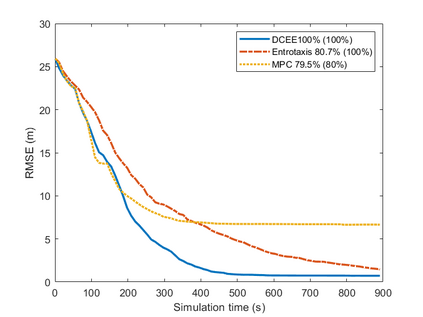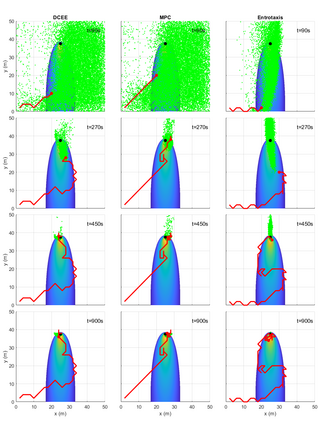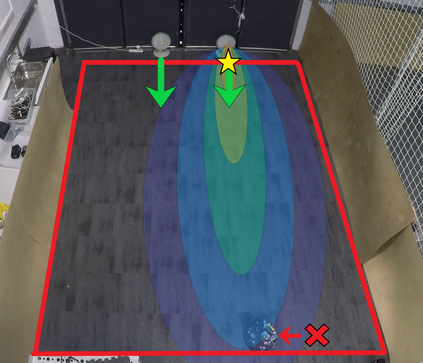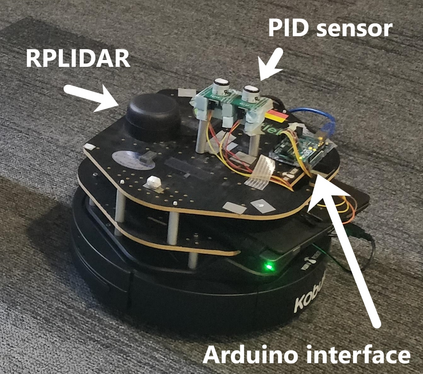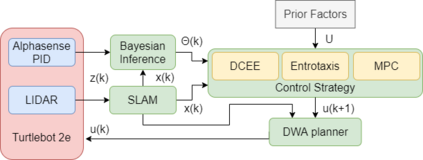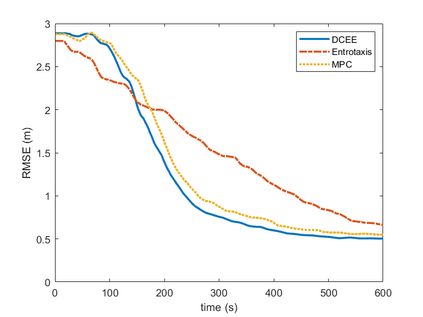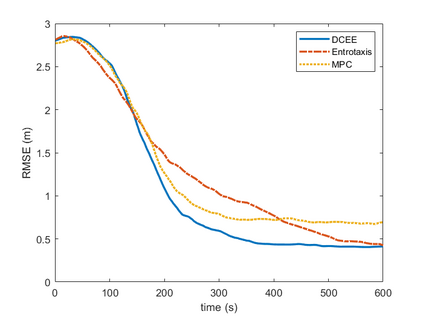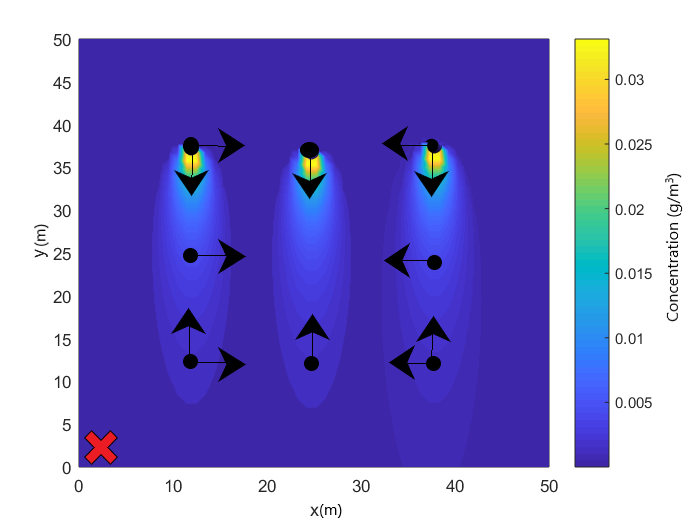This paper proposes an optimal autonomous search framework, namely Dual Control for Exploration and Exploitation (DCEE), for a target at unknown location in an unknown environment. Source localisation is to find sources of atmospheric hazardous material release in a partially unknown environment. This paper proposes a control theoretic approach to this autonomous search problem. To cope with an unknown target location, at each step, the target location is estimated by Bayesian inference. Then a control action is taken to minimise the error between future robot position and the hypothesised future estimation of the target location. The latter is generated by hypothesised measurements at the corresponding future robot positions (due to the control action) with the current estimation of the target location as a prior. It shows that this approach can take into account both the error between the next robot position and the estimate of the target location, and the uncertainty of the estimate. This approach is further extended to the case with not only an unknown source location, but also an unknown local environment (e.g. wind speed and direction). Different from current information theoretic approaches, this new control theoretic approach achieves the optimal trade-off between exploitation and exploration in a unknown environment with an unknown target by driving the robot moving towards estimated target location while reducing its estimation uncertainty. This scheme is implemented using particle filtering on a mobile robot. Simulation and experimental studies demonstrate promising performance of the proposed approach. The relationships between the proposed approach, informative path planning, dual control, and classic model predictive control are discussed and compared.
翻译:本文建议一个最佳的自主搜索框架,即勘探和开发双重控制(DCEE),用于在未知环境中的未知地点的一个目标。源本地化是为了在部分未知环境中找到大气危险物质释放的来源。本文件建议对这个自主搜索问题采取控制理论方法。为了应对一个未知的目标地点,每一步都由巴耶斯推断估计目标地点。然后采取控制行动,尽量减少未来机器人位置与对目标地点的假设未来估计之间的误差。后者是假设未来相应机器人位置的测量结果(由于控制行动)产生的,而目前对目标地点的估算是先前的。它表明,这一方法既考虑到下一个机器人位置与目标地点的估计之间的误差,也考虑到估计目标地点的不确定性。 这种方法进一步扩展至案件,不仅有一个未知的来源地点,而且还有一个未知的当地环境(如风速和方向)。 与目前的信息讨论方法不同,这种新的控制方法实现了当前机器人位置(由于控制行动)与目前对目标位置的估计相比,在目前的目标位置上实现了最佳的贸易取舍。 使用一个未知的预估测方法,同时使用一个未知的预估测的预估测的预测的预估结果,正在推进的预估测结果。


